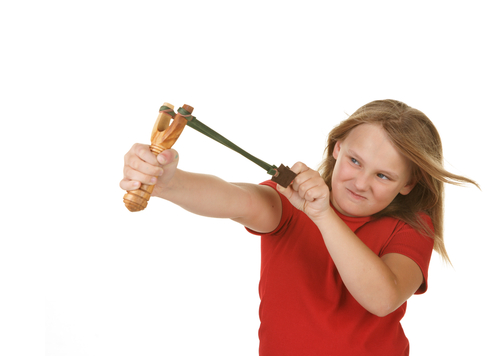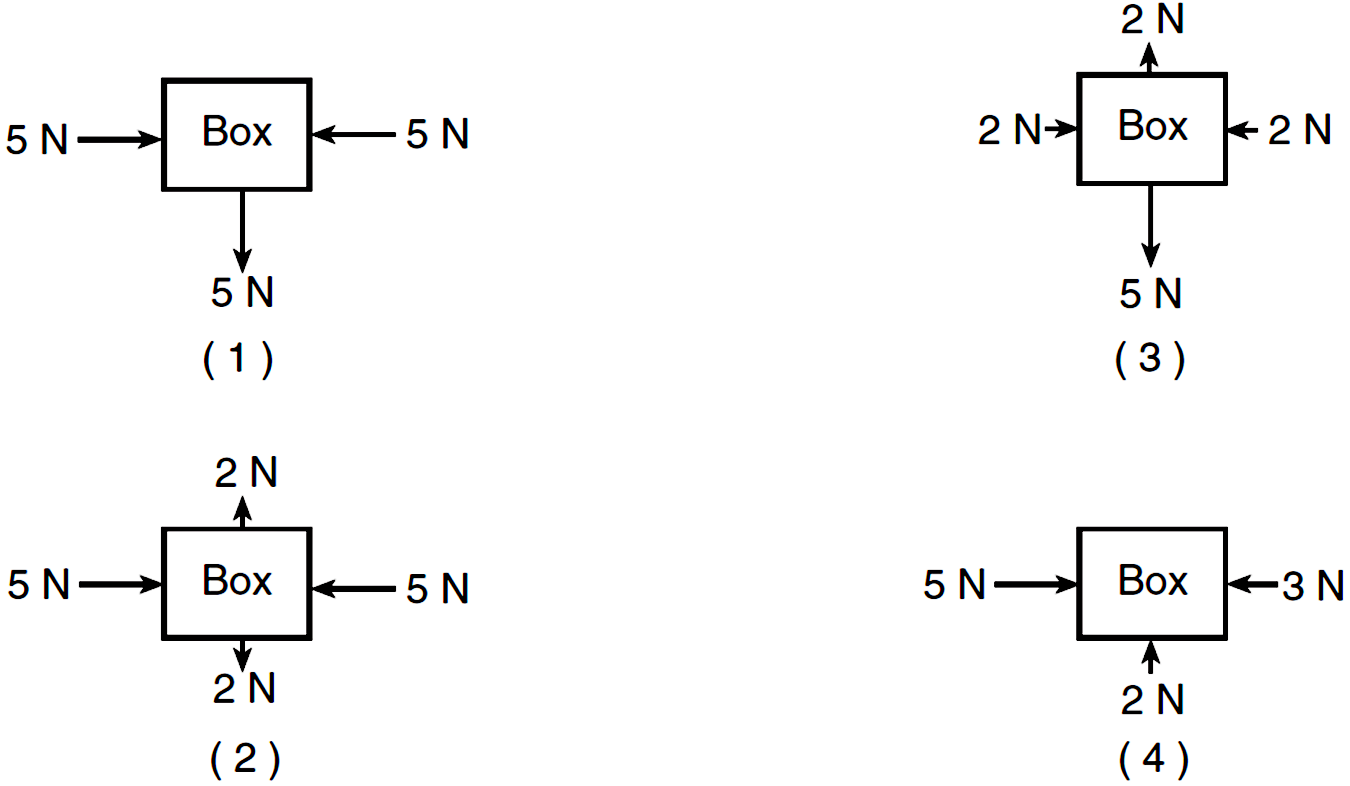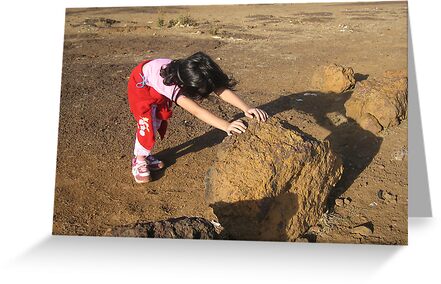eQuizShow
Force & Motion Unit 2013-2014
Newton's Laws
Question: What will happen to the coin when the card is flicked to the side?

Answer: The coin's inertia will hold it in place and it will fall into the cup after the card is flicked to the side.
Question: What causes the child to go up in the air?

Answer: A reaction force to the action force of jumping down on the bed causes the child to go up in the air.
Question: A rocket car moves because because the engine exerts a force in one direction against the exhaust gases and the exhaust gases exert a force ___________________________________.

Answer: against the engine in the opposite direction.
Question: What is the action force when using a slingshot?

Answer: The elastic force of the slingshot being pulled back is the action force.
Question: A large, heavy truck and a small, light car are going downhill approaching a stop sign. Both drivers apply their brakes at the same time. Using the word "mass," explain what will happen.

a. The car with the smaller mass will require less force to stop than the truck with the larger mass
b. The truck with the larger mass will maintain its velocity while traveling down the hill
c. The car with the smaller mass will take longer to stop than the truck with the larger mass
d. The truck with the larger mass will have less inertia than the car with the smaller mass
Answer: a. The car with the smaller mass will require less force to stop than the truck with the larger mass.
Motion Graphs
Question: Which runner is running at a constant speed?
Which runner is slowing down?
Which runner is speeding up the fastest?
Which runner is speeding up, but not as fast as another runner?

Answer: Runner C is running at a constant speed.
Runner A is slowing down.
Runner B is speeding up the fastest.
Runner D is speeding up, but not as fast as Runner B.
Question: Which rabbit maintained a constant speed toward the finish line- the gray, red, green, or blue rabbit?

Answer: The green rabbit maintained a constant speed because his distance from the start line increased the same amount every second. The red rabbit was also travelling at a constant speed but he was running toward the start line.
Question: Which runner ran fastest- the red runner or the blue runner?

Answer: The blue runner went fastest. That runner ran the same distance in a shorter amount of time.
Question: Which rabbit showed positive acceleration?

Answer: The blue rabbit showed positive acceleration. The gray rabbit shows negative acceleration.
Question: Tell a story about the motion of this rabbit shown in this graph.

Answer: (Example) The rabbit was sitting still. Then it smelled a fox, and started running. It ran faster and faster until two seconds later, it was going 8 meters per second. Then for 8 seconds the little rabbit maintained his speed, but he was getting winded and he couldn't smell the fox anymore, so he slowed down, until he was running at 4 meters per second. He loped along for another four seconds.
Forces
Question: If the orange cat is pulling with a force of 25N, and the gray cat is pulling with a force of 30N, what is the net force and in which direction?

Answer: There is a net force of 5N, and the rope will go to the left (toward the gray cat).
Question: If Betsy pushes with a force of 75N and Polly pushes with a force of 75N, and friction between the floor and the dresser is a force of 75N, what is the resulting net force? What, if any, motion will occur?

Answer: The net force will be 75N and the resulting motion will be that the dresser will move away from Betsy and Polly.
Question: Paper airplanes slow down because the forces on them become ____________.

Answer: unbalanced
Question: Which diagram shows a box in equilibrium?

Answer: Diagram 2 shows all the forces are in equilibrium.
Question: What law of motion does this picture represent? What kind of force will be required to change his motion?

Answer: This picture represents Newton's First Law- the tendency of an object to resist a change in it's motion is called inertia.
An unbalanced force will be required to change the subject's motion.
Formulae, Etc.
Question: What is the formula for speed?

Answer: Speed = Distance / Time
Question: What three things show acceleration?

Answer: Speeding up, slowing down, or changing direction are three things that show acceleration.
Question: What is the formula for Newton's Second Law?

Answer: Force = (Mass) (Acceleration)
Question: What are the units of force, speed, and acceleration?

Answer: The unit for speed is distance/time, for example m/sec.
The unit for force is Newtons, or (kg * m) /sec2.
The unit for acceleration is m/sec2.
Question: How much force is required to move a boulder of 500kg at an acceleration of 10m/sec2?

Answer: If F=ma, then 500kg * 10m/sec2= 5000(kg*m)/sec2
and since (kg*m)/sec2 is the same a N, the force needed is 5000N.
Miscellaneous
Question: 
In order to slow the mower, what type and amount of force is needed?
Answer: It will require an unbalanced force to slow the mower, a greater friction force than pushing force.
Question: 
YOU use English.
Answer: An object in motion will stay in motion and an object at rest will stay at rest, unless acted on by an unbalanced force.
Question: 
Explain the Law of Motion that is illustrated in the diagram.
Answer: Newton's Third Law states that for every action, there is an equal and opposite reaction. So when the man pushes against the boat (action), the boat moves backwards (reaction).
Question: 
Explain the appropriate law of motion demonstrated in this picture.
Answer: Mass multiplied by acceleration is equal to the force applied. If the masses are equal, the one that has a greater force applied to it, is the one that accelerates faster.
Question: What is the difference between force, effort, and work, and between speed and velocity?
Answer: Work is performed when force is applied to an object and it moves a distance. Force is a push or pull. Effort is a force.
Speed is how far something moved in an amount of time. Velocity is how far and in what direction something moved in an amount of time.























